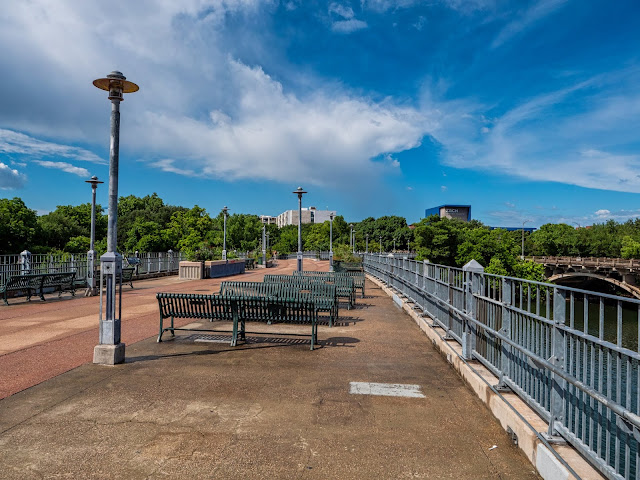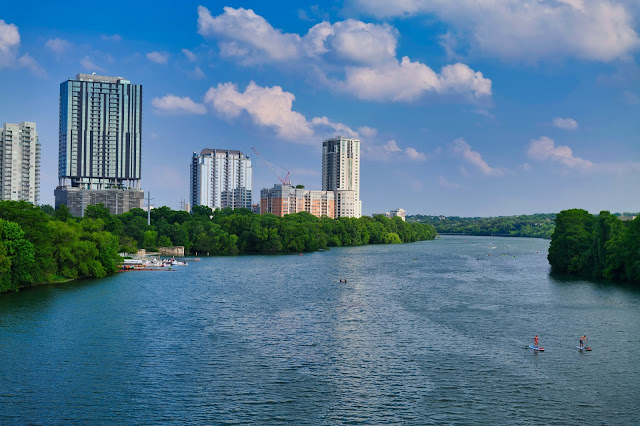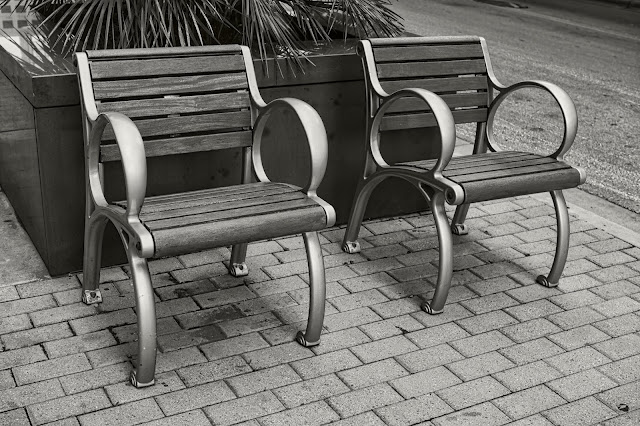Panasonic Lumix G9 camera.
A friend asked me for a couple of prints from Iceland. He'd always wanted to go there and had planned a trip for this Spring. Plans were cancelled (hopefully just delayed) because of the pandemic but he felt like having a few color prints around would keep him focused on making the trip happen, eventually. I was happy to accommodate him and went to the folder on one of my hard drives that had all of my selects from the 2018, late Fall, trip to Iceland to put together an even smaller set from which to choose.
As I looked through 2500 images shot over 8 eight days I remembered how much I loved the color and the general "look" of the files from the two cameras and assorted lenses I packed and carried through that little island country. There are no images in the set that I think, given the circumstances of group travel, could have been made any better with any different camera, and, I think the amazing image stabilization of the G9 provided me with shots I would not have been able to get otherwise. I made a conscious decision not to bring along a tripod because I was also instructing and it wasn't a trip dedicated to my personal shooting.
Around that time I'd written a number of blog posts about how well I liked that camera and how much I appreciated the performance of two specific lenses; the Panasonic/Leica 12-60mm f2.8-4.0 and the Olympus 12-100mm f4.0. Both were as near to perfect as a zoom lens could be, in my estimation. The fact that I took both spoke to my inability to be decisive and leave one at home. I rationalized my inability to choose between the two lenses by claiming that I needed one as a back-up to the other. I mean I did bring two camera bodies, why would I not be equally careful to bring back-up lenses? Right?
When I got home from Iceland I played around with a lot of the files in post production and noticed several things about the G9s and the two lenses. First of all, they worked well together. While the Olympus offered a good bit more reach the Panasonic/Leica offered a comfortable range but also gifted the system with a second point of image stabilization that made the whole system so rock solid I felt like I could hand hold.....any exposure time. It was (and still seems) like magic.
Recently a blog reader named, David, asked me my opinion about the G9. I went back into the VSL archive to see what I wrote contemporaneous to my shooting with that camera. The more I read the more I smiled. It was one of those cameras that just becomes your best friend. And I started wondering how I would feel about that camera now; especially since I've spent some time with its bigger siblings, the S1 and S1R cameras. And I've started to appreciate the size and weight advantages of the smaller format camera; at least for non-commercial work. Stuff like walking around the lake, or through downtown.
After I came back from Iceland I started reading about the Fuji XT-3 and I started hearing great reports from all over the place. I bought and tested an XT-3, shooting half a job with the G9 and the other half with the Fuji and comparing them. I worked on a tripod which cut out the need to use and evaluate the handling when using the dual I.S. system of the G9 versus the "lens only" image stabilization of the Fuji. I liked the Fuji so when I got back from a 16 day, madcap, maximum travel, commercial job I decided to further investigate the new Fuji system. The advantages of the Fuji XT-3 over the G9 were mostly in video. The XT-3 could shoot at a much higher data rate and could output 10 bit, 4:2:2 over HDMI. The G9 was capped at 8 bit, 4:2:0 and had a much lower maximum bit rate of 100 m/bs. The Fuji also offered a slightly bigger sensor with higher resolution.
I sold the Panasonic stuff and stocked up on Fuji equipment and that turned into a whole other story. I used the Fuji equipment quite happily for about a year until Panasonic launched their full frame, S1 and S1R cameras which made (and make) more sense for my commercial work. But one of the things I really liked about the S1 camera was the ability, with the new SFU firmware upgrade and feature unlock, to shoot video at great bit rates, with 10 bit 4:2:2 in camera. That, and the Panasonic dedicated audio adapter makes shooting video with great audio a breeze. And, for the last five months I've been happy with the full frame S1s and their super good but heavy lenses. The only thing that gives me pause is when it comes to using the cameras outside the boundaries of my commercial work. Those suckers are heavy!
When working commercially (for the client's hard won money!) I'm willing to use the cameras that give the best image quality ( in my estimation ) without much regard for size and weight. Anything I can do to ensure my success with clients is fair game. And, usually, we're transporting our gear on carts and with assistance. Especially so when shooting video.
But looking back over my history of personal shooting recently I started pining for an adjunct, mythical system that would have the same menu structure as my commercial cameras, offer really good video specs, and weigh half as much. That combination would make the mythical camera my new "art" camera and I'd take it with me all the time to shoot all the stuff that I do just for myself.
As I did cursory research to best answer David's question about the G9 I was a bit shocked that I'd ignored a critical firmware upgrade for the G9 (2.0) which came out last Fall. The fixes and feature upgrades make a three (plus) year old camera a head-to-head contender to all the latest and best micro four thirds cameras currently on the market. The biggest step up was unlocking 60fps, 4K video (full frame; no line skipping or crops) in 10 bit, 4:2:2, in camera. And the basic firmware upgrade was...free. You can spend $100 more to unlock V-Log and waveform monitors...but if you don't need V-Log you basically get a camera that can go head-to-head with the Olympus OMD EM1-3 at about half the price.
The firmware upgrade with all the new features, combined with a price drop to under $1,000 for the body, changes the camera buying calculus. It piqued my interest in a big way. When I checked in with my local dealer they told me that the camera, bundled with the Panasonic/Leica 12-60mm lens was on sale right now for $1600. With the "good customer:thanks for shopping with us during the pandemic" coupon the price dropped another $50 to $1550. Now the body and a premium, wide-ranging zoom lens was priced at less than what I had paid for my first, original G9, body only. By several hundred dollars. Curiosity properly instilled and desire well fanned I drove out yesterday and picked up the brand new set. And here's the kicker: Unlike other camera makers who also offer firmware upgrades you don't have to bring your new camera body home with firmware 1.0, charge the batteries, and then upgrade it yourself. No. The G9 has a sticker on the box that tells you it has the upgraded firmware. And, when I charged the battery and checked the version # it showed as firmware 2.1.
A nice touch.
I said back in 2018 that the G9 was one of the most fun and most comfortable cameras I had used during my 40 years of experience with cameras and I meant it. Yes, I got sidetracked for a while but I decided that it was time to just disregard logic and re-own a camera that comes as close as any I've used to being perfect for the kind of work I do when clients aren't in tow.
The owner of the camera store had just taken in a used (mint, almost new) Fuji X-100V and wanted to show it to me. Everyone was excited to have a used unit of the 100V to sell. I played with the camera for a few minutes and handed it back. It's very, very nice. Very well built. But with the straightjacket reality of a single, overly wide lens grafted on the front for all eternity by direct comparison the X100V made the G9 an even more logical purchase. (If the buying of any camera during the business shut down of a pandemic can be said to make any sense at all...).
So, now I'm almost completely overrun by Panasonic cameras, lenses and accessories. The one, lone non-Lumix camera in the house is the Sigma fp (not counting old point and shoot Canon G series cameras). The nice thing about being in a uniform eco-system is that all the menus make sense and work with a group logic. Don't know why I keep buying these cameras when I'm not even sure I'll still be doing commercial photography when the "stay-at-home" stuff ends. We'll see when we get there.
Now. On to yesterday's swim. I got to swim practice for three weekdays last week and it was a nice if somewhat painful re-entry to our swim program. But I took it easy on myself, which was convenient to do since attendance at the 6 a.m. workouts was a bit low. I had a lane to myself on all three days! Then Sunday rolled around and I had signed up for the popular 9-10 a.m. swim workout. That meant I'd be sharing a lane with another swimmer. That meant we'd have to agree on intervals and I'd have to actually perform instead of taking it easy on myself.
Will was our coach and he instructed us about following the rules for aquatic social distancing and all the on-deck protocols we were required to observe. We started with a 400 yard swim followed by two 100 yard kicks. Then we rolled into a set of twelve x 50 yard swims, alternating strokes and drills. Once we were as warmed up as we were going to get we pushed forward into a daunting (for someone who has been absent from the pool for two months) set of nine x 100 yard freestyle swims on a 1:40 interval. We followed that with two 200 yard swims, working on stroke techniques. A shadow of our previous workout intensity, pre-Covid, but enough to wear me out. I woke up this morning sore and tired. I'm coming to grips with the realization that as I age I lose fitness more quickly than I used to and it takes me longer to recover than it used to. Or maybe it was the four mile run a couple of us did after practice that put the whipped cream on the sundae of exercise.... At any rate, it was hard to get out of bed today.
Thank goodness we have the day off from swimming. All I have on the schedule today is some planking and a nice, long slow run. That, and playing around with a G9.
Hope your Memorial Day is good and safe.
meditating on the compulsion to always try something new, even if it's old.
I would never have imagined that barely 2400 yards of swimming would be enough to
make me tired and sore. It's important to move past the mental resistance and remind myself that
repetition will make everything easier over time...
Just day dreaming about sun blocking diffusers. Such a nice idea.
G9 in Iceland. Also, see below.
Somewhere in rural North Carolina for a client. G9.
Need to work on flexibility today. My flip turns were rough yesterday...
G9 +diffuser.
My current favorite summertime goggles.
Just another day in paradise. S1R 45mm Sigma.



































































